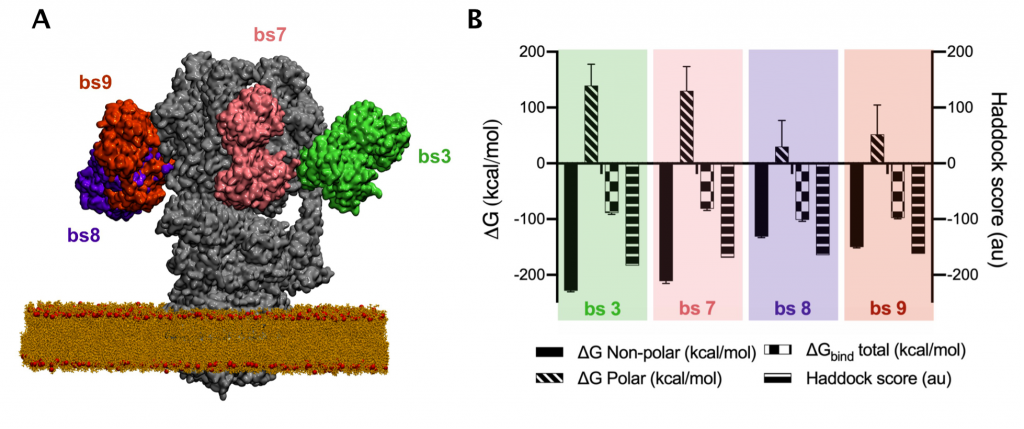Please check our recent publication in the International Journal of Biological Macromolecules (IF 6.953), a collaborative effort of BioSIM with Univ Minho/CBMA and CEB.
The milk-derived lactoferrin inhibits V-ATPase activity by targeting its V1 domain
Cátia Santos-Pereira, Juliana F. Rocha, Henrique S. Fernandes, Lígia R. Rodrigues, Manuela Côrte-Real, Sérgio F. Sousa
International Journal of Biological Macromolecules (2021) | DOI: 10.1016/j.ijbiomac.2021.06.200
Lactoferrin (Lf), a bioactive milk protein, exhibits strong anticancer and antifungal activities. The search for Lf targets and mechanisms of action is of utmost importance to enhance its effective applications. A common feature among Lf-treated cancer and fungal cells is the inhibition of a proton pump called V-ATPase. Lf-driven V-ATPase inhibition leads to cytosolic acidification, ultimately causing cell death of cancer and fungal cells. Given that a detailed elucidation of how Lf and V-ATPase interact is still missing, herein we aimed to fill this gap by employing a five-stage computational approach. Molecular dynamics simulations of both proteins were performed to obtain a robust sampling of their conformational landscape, followed by clustering, which allowed retrieving representative structures, to then perform protein-protein docking. Subsequently, molecular dynamics simulations of the docked complexes and free binding energy calculations were carried out to evaluate the dynamic binding process and build a final ranking based on the binding affinities. Detailed atomist analysis of the top ranked complexes clearly indicate that Lf binds to the V1 cytosolic domain of V-ATPase. Particularly, our data suggest that Lf binds to the interfaces between A/B subunits, where the ATP hydrolysis occurs, thus inhibiting this process. The free energy decomposition analysis further identified key binding residues that will certainly aid in the rational design of follow-up experimental studies, hence bridging computational and experimental biochemistry.

